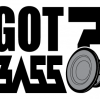-
Recently Browsing 0 members
No registered users viewing this page.
-
-
Recent Topics
-
- 19 comments
- 320 views
-
- 3 comments
- 75 views
-
- 398 comments
- 33,297 views
-
- 4 comments
- 155 views
-
- 2 comments
- 733 views
-
- 5 comments
- 1,582 views
-
-
-
Similar Content
-
By musgrove
I'm nearing the finish line in an installation that includes a new HU with FT/RT, FR/LT RR/RT RR/LT, and a SUB output, plus an unmarked, unidentified in the manual, RCA output on the back of the HU next to the SUB output.
I have a 5 channel amp that has Channels 1(white), 2(red), 3(white) and 4(red) marked clearly on the amp, plus a SUB RT(white) and SUB LFT(red) input, all input by RCA.
The same amp has 4 sets of output terminals, 1 each for + & -. It also has 2 terminals for the sub (+ & -), which connects to the sub on R &L posts.
So, first question:
How do I run a cable from the HU, which is 1 RCA connection, to the AMP, which has both LT and RT RCA input connections?
Second question:
I also have the White, Grey, Green, Violet (+&-'s) hooked up from the HU to the wiring harness that goes to the speakers. The reason for this was that I have six speakers placements: 2 6.5" in the front doors, 2 6.5" in the rear doors. In the dash, I removed the tweeters that were in a plate and replaced them with Infinity Kappa20's midrange speakers that have bandpass crossovers that handle 550hz-7Mhz hooked up.
Just to confuse things more, The manual for the amp shows The channel 1 speaker attached to the channel 2 output terminals(+&-) and the channel 2 speaker (+&-) attached to the channel 1 terminals. Channels 3 and 4 are where I expect them, 3 & 4. And then again for the SUB it has + and - terminals to go to + & - posts on the SUB.
I've routed every plug in every location and checked each speaker, one by one by changing the fader/balance in different combinations to determine what's going on.
What I sense I'm doing wrong is that I'm wiring RCA cables with both RT/LT wires into the AMP to the HU when both only want a single signal cable each going into each jack. One single wire each that somehow is carrying both the Positive and Negative in it, versus a double speaker wire that goes into a positive/negative RCA male connector.
So that leaves the sub with one single output HU going to the AMP which has a R(white) and L(red) female connector. And then the 5th channel +&- going to the +&- on the SUB input.
The reason I have the HU output speaker wires (white,grey,green,violet) going to the speakers is because of the Dash Unit speakers. They're tapped into those 4 in the wiring harness where I can't get to them, but run from the HU from 4 wires to 6 different speakers). Again, the dash speakers are 2" Infinity midranges with bandpass crossovers connected to each which came with them. I just noticed they are 2.5 ohm, and everything else is 4 ohm, which is worrisome.
Is there a wiring genius out there that can understand what's going on and tell what I have wrong? There's also a whine coming from the front right dash speaker and possibly the right(passenger side) door speakers. I have the power cable far from the speaker wires on either sides of the vehicle. But I'm sure it has with the larger wiring issue at hand.
Any and all help is greatly appreciated. This is a crazy puzzle. Here's a diagram I made to make it more visual:
-
-
Recent YouTube Posts




